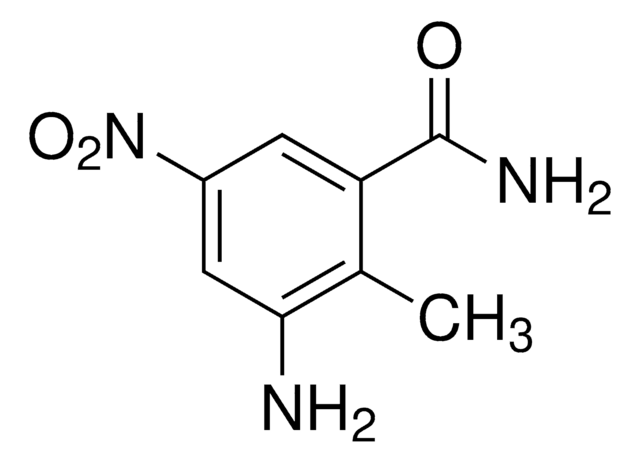SML0982
Astaxanthin
≥97% (HPLC), powder, PPARγ
Sinonimo/i:
3,3′-Dihydroxy-β-carotene-4,4′-dione, trans-Astaxanthin
Scegli un formato
Scegli un formato
About This Item
Prodotti consigliati
Nome del prodotto
Astaxanthin, ≥97% (HPLC)
Saggio
≥97% (HPLC)
Stato
powder
Condizioni di stoccaggio
desiccated
protect from light
Colore
, pink to very dark purple
Solubilità
DMSO: 1 mg/mL (warmed)
Temperatura di conservazione
−20°C
Stringa SMILE
O[C@H]1CC(C(=C(C1=O)C)\C=C\C(=C\C=C\C(=C\C=C\C=C(/C)\C=C\C=C(/C)\C=C\C2=C(C(=O)[C@H](CC2(C)C)O)C)\C)\C)(C)C
InChI
1S/C40H52O4/c1-27(17-13-19-29(3)21-23-33-31(5)37(43)35(41)25-39(33,7)8)15-11-12-16-28(2)18-14-20-30(4)22-24-34-32(6)38(44)36(42)26-40(34,9)10/h11-24,35-36,41-42H,25-26H2,1-10H3/b12-11+,17-13+,18-14+,23-21+,24-22+,27-15+,28-16+,29-19+,30-20+/t35-,36-/m0/s1
MQZIGYBFDRPAKN-UWFIBFSHSA-N
Descrizione generale
Applicazioni
- as an antioxidant to study its effect on Brachionus manjavacas (Rotifera) population growth[2]
- to study its effects on the treatment of diabetic retinopathy.[2][3]
- to investigate its role in restoring the expression of Nrf2 (nuclear factor erythroid 2 p45-related factor 2) and glutathione S-transferase P1 (GSTP1) through epigenetic modification in human prostate LNCaP cells.[1]
Azioni biochim/fisiol
Altre note
Codice della classe di stoccaggio
11 - Combustible Solids
Classe di pericolosità dell'acqua (WGK)
WGK 3
Punto d’infiammabilità (°F)
Not applicable
Punto d’infiammabilità (°C)
Not applicable
Scegli una delle versioni più recenti:
Certificati d'analisi (COA)
Non trovi la versione di tuo interesse?
Se hai bisogno di una versione specifica, puoi cercare il certificato tramite il numero di lotto.
Possiedi già questo prodotto?
I documenti relativi ai prodotti acquistati recentemente sono disponibili nell’Archivio dei documenti.
I clienti hanno visto anche
Articoli
DISCOVER Bioactive Small Molecules for Nitric Oxide & Cell Stress Research
Il team dei nostri ricercatori vanta grande esperienza in tutte le aree della ricerca quali Life Science, scienza dei materiali, sintesi chimica, cromatografia, discipline analitiche, ecc..
Contatta l'Assistenza Tecnica.







![1,8-diazabiciclo[5.4.0]undec-7-ene 98%](/deepweb/assets/sigmaaldrich/product/structures/120/564/5b373e23-1624-489c-8efb-692de0f96ffb/640/5b373e23-1624-489c-8efb-692de0f96ffb.png)



